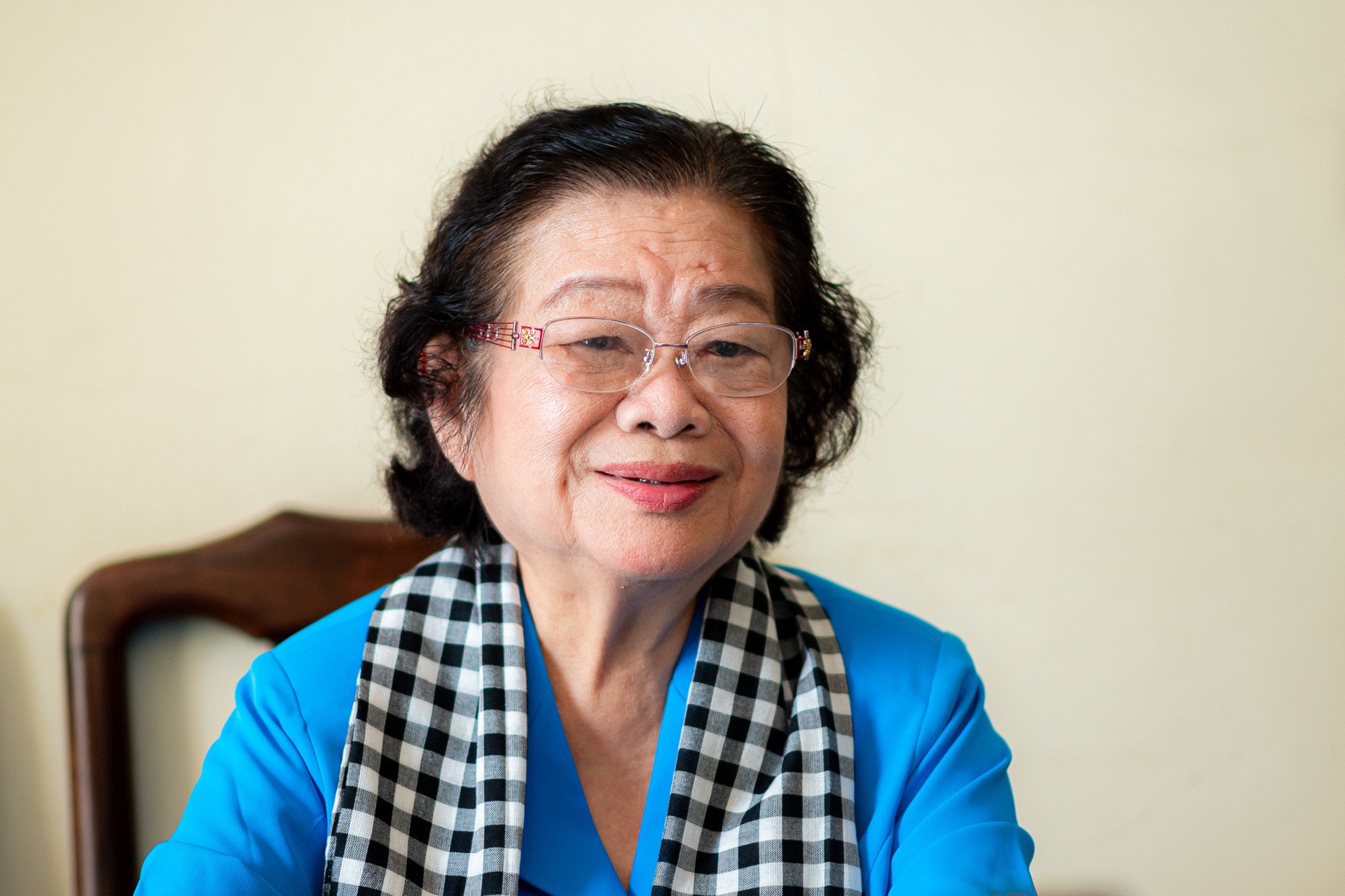Medical news October 13: Measles vaccination rate in Ho Chi Minh City reaches high rate
Up to now, in Ho Chi Minh City, 99% of children from 1-10 years old who have not received enough measles vaccine doses have been vaccinated.
Vaccination rates are high
As of October 11, the total number of measles vaccinations in the city was 218,298. Of these, children aged 1-5 years old received 45,774 doses (100%), and children aged 6-10 years old received 147,003 doses (98.72%). The measles vaccination campaign achieved 99% of the plan.
 |
| Illustration photo. |
Currently, there are 3 districts with measles vaccination rates below 95%, including Tan Phu, District 3 and Can Gio. The Department of Health recommends that the People's Committees of these districts need to speed up the progress to achieve the campaign goals in the district; for districts that have reached a rate of 95% or higher, it is necessary to maintain updates on the situation of mobile children to avoid missing unvaccinated children in the area.
On October 11, the city recorded 22 cases of rash fever suspected of measles reported (1 case of measles confirmed by laboratory, 21 cases of clinically suspected measles). 10/22 districts and cities had cases of rash fever suspected of measles including: District 5 (1 case), District 6 (1 case), District 8 (2 cases), District 10 (2 cases), District 12 (2 cases), Binh Chanh (1 case), Binh Tan (1 case), Cu Chi (2 cases), Tan Phu (2 cases), Thu Duc City (8 cases).
The total number of suspected measles rash fever cases recorded to date is 1,346 cases (567 laboratory-confirmed measles cases, 507 clinically suspected measles cases and 272 measles excluded cases).
Districts with high cumulative cases of suspected measles include: Binh Chanh (290 cases), Binh Tan (257 cases) and Thu Duc City (128 cases).
Each year, nearly 100,000 patients undergo interventional cardiovascular procedures.
It is estimated that more than 1.3 million Vietnamese people live with coronary artery disease, and each year nearly 100,000 patients undergo interventional cardiovascular procedures.
In the past 2 years, the number of cases requiring cardiovascular intervention in our country increased by nearly 20%, especially cases of acute myocardial infarction and coronary artery disease.
Professor, Dr. Pham Manh Hung, President of the Vietnam Association of Interventional Cardiology, said that in the past 2 years, according to reports, the number of cases requiring cardiovascular intervention in our country has increased by nearly 20%, especially cases of acute myocardial infarction and coronary artery disease.
Currently, it is estimated that more than 1.3 million Vietnamese people are living with coronary artery disease, and each year, nearly 100,000 patients undergo interventional cardiovascular procedures, of which 40,000 - 50,000 coronary stent interventions are performed to save patients' lives.
In addition, the number of patients receiving intervention for other cardiovascular diseases is also increasing rapidly, such as rhythm intervention, intervention for structural heart disease, intervention for large blood vessels and peripheral blood vessels, etc.
According to Professor, Dr. Nguyen Lan Viet, Permanent Vice President of the Vietnam Cardiology Association, interventional cardiology is an increasingly developing field, increasingly proving its important and pioneering role in diagnosing and especially treating complex cardiovascular diseases.
Thanks to the remarkable advances in science and technology, cardiovascular intervention techniques are becoming more popular, more effective, and bringing more benefits to patients.
In recent years, the Cardiology industry in Vietnam in general and Interventional Cardiology in particular have made great strides, deeply integrated with the world and successfully applied many advanced techniques, comparable to developed countries in the region and globally.
Nowadays, it can be said that all cardiovascular diseases can be diagnosed and treated quickly and effectively domestically.
Three nutritional burdens Vietnamese children face
Associate Professor, Dr. Tran Thanh Duong, Director of the National Institute of Nutrition (Ministry of Health), said that Vietnamese children are facing three nutritional burdens: malnutrition, especially stunting; overweight and obesity; and micronutrient deficiencies.
Health is a precious asset of human life, starting from the first 1,000 days of life and continuing from 2-12 years old. Science has proven that about 86% of a person's maximum height is achieved under the age of 12, this is the stage that determines the maximum development of human stature, physical strength and intelligence.
Therefore, the issue of nutritional care for children at this stage, especially school nutrition, has become urgent and needs to be fully understood to have effective implementation solutions.
Associate Professor, Dr. Tran Thanh Duong said that according to the 2023 national survey, the rate of stunting in children under 5 years old in Vietnam is 18.2% (belonging to the group of countries with the rate of stunting in children below 20%, which is the average level according to the classification of the World Health Organization).
However, this rate is still high in the Northern Midlands and Mountains (24.8%) and the Central Highlands (25.9%). In addition, there is an increase in the rate of overweight and obesity in all subjects, including overweight and obesity in children aged 5-19, increasing from 8.5% in 2010 to 19.0% in 2020 (more than double after 10 years).
The National Nutrition Strategy for the 2021-2030 period aims to improve the nutritional status of the entire population, especially school-age children and adolescents, including controlling the rate of overweight and obesity in children, especially in urban areas.
At the same time, strengthen nutrition education in schools, with the goal of 60% of schools in urban areas and 40% in rural areas organizing school meals with menus according to recommendations by 2025 and striving to reach 90% and 80% respectively by 2030.
Regarding the physical development of Vietnamese people, in Vietnam, nutrition experts say that over the past 10 years, the average height of Vietnamese people has gradually improved thanks to advances in nutrition and health care. Along with that, physical strength and endurance have also changed.
Currently, the average height of Vietnamese men is 168.1 cm and that of women is about 156.2 cm. Compared to the period 10 years ago, the average height of men increased by 3.7 cm and that of women increased by 1.4 cm. However, the height difference between Vietnam and the world is still a large gap. The average height in the world is currently 176.1 cm for men and 163.1 cm for women.
According to nutritionists, "short and light weight" is not a genetic trait of Vietnamese people. If we improve our diet, exercise, and get enough sleep, the stature of Vietnamese people will continue to improve.
Many studies show that height development depends 20% on genetics, while nutrition, exercise and environment account for 80%.
Source: https://baodautu.vn/tin-moi-y-te-ngay-1310-tiem-vac-xin-soi-tai-tphcm-dat-ty-le-cao-d227336.html




![[Photo] Children's smiles - hope after the earthquake disaster in Myanmar](https://vstatic.vietnam.vn/vietnam/resource/IMAGE/2025/4/14/9fc59328310d43839c4d369d08421cf3)
![[Photo] General Secretary To Lam chairs the third meeting to review the implementation of Resolution No. 18-NQ/TW](https://vstatic.vietnam.vn/vietnam/resource/IMAGE/2025/4/14/10f646e55e8e4f3b8c9ae2e35705481d)
![[Photo] Touching images recreated at the program "Resources for Victory"](https://vstatic.vietnam.vn/vietnam/resource/IMAGE/2025/4/14/99863147ad274f01a9b208519ebc0dd2)
![[Photo] Opening of the 44th session of the National Assembly Standing Committee](https://vstatic.vietnam.vn/vietnam/resource/IMAGE/2025/4/14/03a1687d4f584352a4b7aa6aa0f73792)



















































































Comment (0)